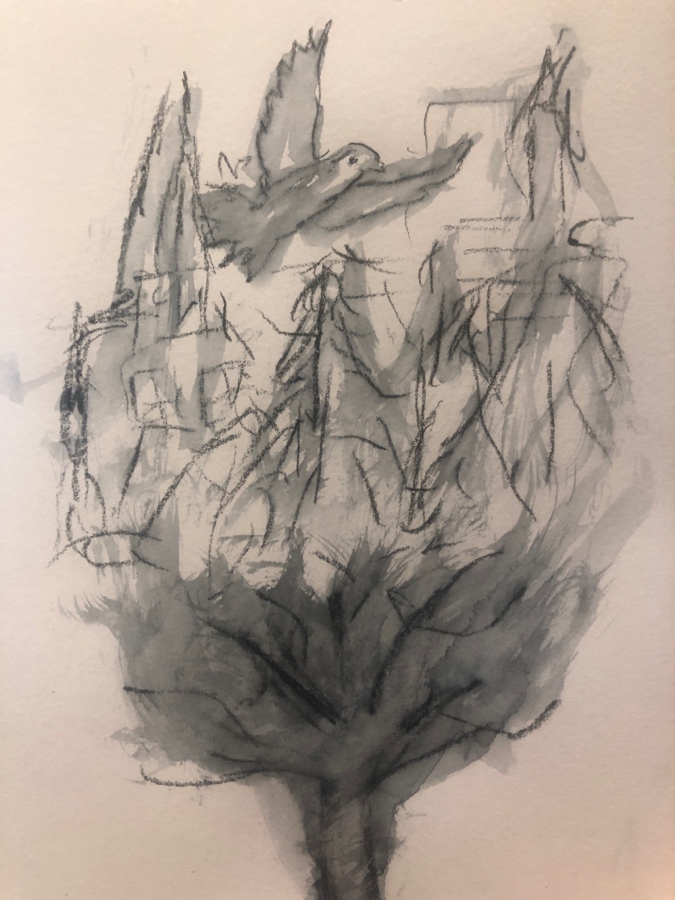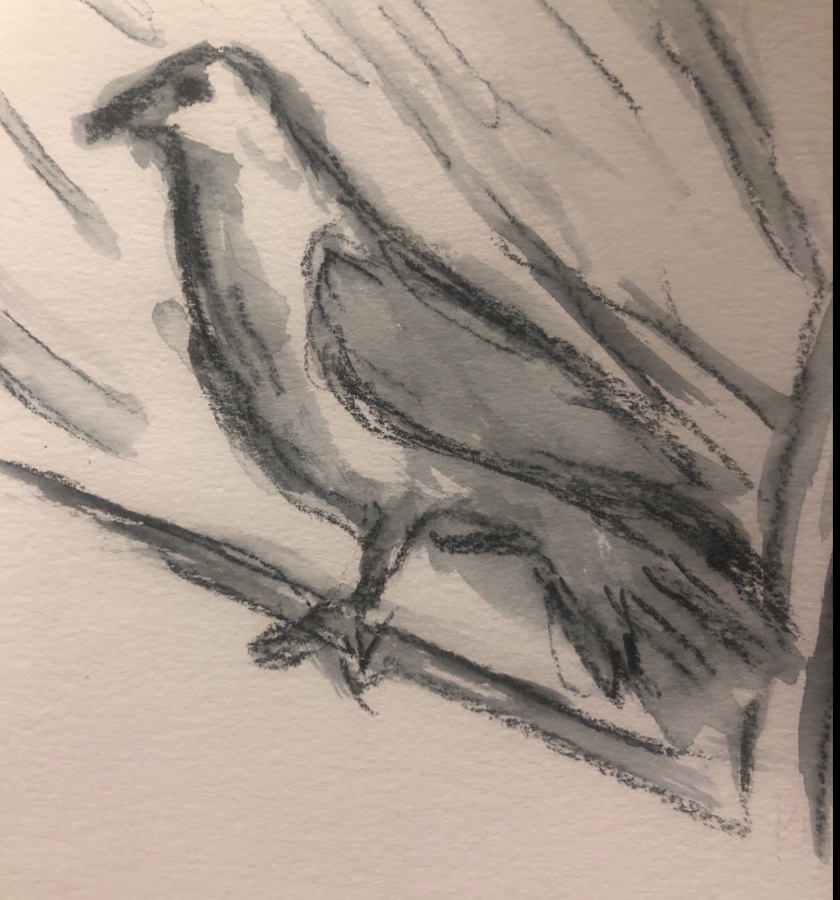
Recordings:
Yes, Exactly, Yes! - 1 -- [6:06]
Yes, Exactly, Yes! - 2 - Las Vegas (Instrumental) -- [8:05]
Yes, Exactly, Yes! - 3 - Las Vegas (Early) -- [7:12]
Yes, Exactly, Yes! - 4 - The River -- [7:07]
Yes, Exactly, Yes! - 5 - The River (again) -- [6:51]
Yes, Exactly, Yes! - 6 - Hindenburg -- [10:49]
Yes, Exactly, Yes! - 7 - Private Life (revisiting experimentally) -- [11:40]
Yes, Exactly, Yes! - 8 -- [14:59]
Yes, Exactly, Yes! - 9 -- [15:37]
Yes, Exactly, Yes! - 10 -- [13:57]
2 Comments
HAPPY NEW YEAR, READERS!
My super8 live looping setup got put away for the Red Hook Open Studios shows in November, and I forgot about it. Then I went out of town for a bit (finding some trails to run and warmer weather). Today, I set it back up. Oh, how I missed you, super8 and instruments.
(
youtube link)
Recordings:
live solo improv: super8
Comment...
I've been recording 1-3 hour (occasionally longer) sessions of music and posting them to the
internet as bigass .mp3 files for about 15 years now. As the quality of the music has steadily
icnreased, I've also been looking at ways of making it more accessible (very few people can
commit to listening to 2 hours of a single mp3). So after the last session, I thought it would
be nice to mix it into individual tracks, naming them as I edit the session.
What I determined was that individual tracks were great! I thought about it some more and
decided I could have both, generating the bigass mp3 files and indexing them (much as
brainal.org does, but more intelligently. And then I
realized I could parse the .RPP (REAPER project file) projects from the last 12 years or so,
and generate a list of songs (from places where it was clear everything was edited) for each
session. It doesn't work totally reliably, as there are plenty of places where two or three
songs flow into eachother. But that's OK.
Anyway, so you might have noticed on this page the full jam links have been replaced with
individual song/supersong links. We've been going through naming them as appropriate.
The other nice thing about this is that we can pull these feeds into our band websites...
13 Comments
This is from last Friday night:
(
youtube link)
Comment...
OK so this has been a lot of fun. Two things -- one: I'm really happy with how this song came out a few weeks ago. It's about 2/3 improvised but a theme we've played a few times:
(
youtube link)
Second, we had a very enjoyable session Friday night:
(
youtube link)
Recordings:i drank what
3 Comments
This was another 3 hour session (in hindsight, a little long!). We got good reviews from people who stopped in -- in particular, "good snacks!" seemed to be a
common theme!
(
youtube link)
Comment...
This was an enormous amount of fun, with André Martinez, Andy Omel, Sarai Moore, Cory Choy (and me):
(
youtube link)
Comment...
I've been working on REAPER's video rendering/processing pipeline, allowing video processors to access and share memory with JSFX and ReaScripts, and exposing some new APIs for things like FFTs. It's pretty low-level, the JSFX/video processors are responsible for a lot of stupid work like synchronizing with eachother... but: the key thing is that we (REAPER users) can now effectively build things like AVS into the rendering pipeline, combining video and rendered audio and rendering that to video. I find this really awesome and exciting in the way AVS was, and in a way that has been missing for a long time. And now we can render AVS-like stuff directly to YouTube videos.
To explain: why is this like AVS? AVS had two key things that made it really cool:
- You could build complex things by putting simple things together
- You could also write complex things in code (making those "simple things" a little less simple).
- (I'm bad at counting) (ok REAPER doesn't really address this -- AVS was cool because awesome people made tons of awesome presets for it. but REAPER's made for creators, so I guess we don't have to fulfill this one, so two things.)
REAPER does this too -- you can use video material directly, or one of many video processor presets to do basic things. Then you can also do the second thing by coding video processors (or hacking existing ones) to do new things. As an explanation, the effect in the video below is a combination of an existing preset (the spectrum analyzer), and a little bit of code (15 lines or so) which transforms that into polar coordinates (I could save that second bit of code as a preset for re-use later, including on a video file, etc).
The future is awesome. Now if only the present could catch up.
(
youtube link)
Addendum:
I'm irrationally pleased by this bit of video processor code I spent far too long on, for converting HSV (360/1/1) to RGB:
function h6s2i(h) global() ((h -= floor(h*1/6)*6)<3 ? <1 ? 1-h : 0 : h<4 ? h-3 : 1);
function set_hsv(h,s,v) global() (
h*=1/60; s *= v;
gfx_set(v-h6s2i(h+2)*s,v-h6s2i(h)*s,v-h6s2i(h-2)*s);
);
Also here's another video from testing that I meant to post earlier:
(
youtube link)
2 Comments

